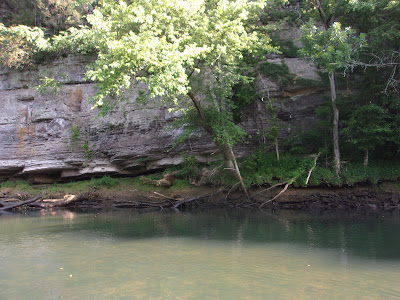Why do some fly fishermen land more fish than other individuals on the water?
Over the years, I've taught my daughter, son, and grandchildren how to fish using the fly rod and fishing reels. I realized it was much easier for them to learn to use the traditional reel/combos than the fly rod. My only child who has mastered the fly rod was my son Jason. My daughter never had the patience to learn to use the fly rod. She is excellent at using the spinning reel but not the fly rod. I am still teaching my oldest grandson how to cast using the fly rod and how to manage the line and land a fish when using the fly rod. The time and patience involved in learning to use the fly rod is why I see very few individuals fly fishing on the tailrace. Most trout on the tailrace is taken using the spinning reel with live bait. I've never seen anyone using a fly rod on Smith Lake but me and the three guys I fish with there. I've learned once you've master using the fly rod, you are hooked for life.
I taught a couple of the guys I fish with how to use the fly rod, and yes, that is the only method of fishing for them now. I feel liking what you are doing is the number one characteristic that makes individuals stand out from the rest of the crowd, whether it's fly fishing or any other activity. Aside from liking fly fishing, other characteristics make a great fly fisherman stand out. You may have read their books and watched some of their videos. Some of the most famous are Lefty Krch, Joe Humphreys, still fishing at 94, and Tom Rosenbaucr. These are seasoned fly fishermen, and there are thousands more. The following list below are the characteristics I feel one needs to achieve to become a seasoned fly fisherman.
Side Note: I create most of my posts while sitting on our back porch enjoying my afternoon cup of coffee; this post was one of them.
Casting Proficiency: Mastering the different fly casting techniques is crucial. Most fly fishermen use the Roll Cast, Back Cast, Low Side Cast, and Bow and Arrow Cast as their main ones. A skilled fly fisherman can accurately and delicately place a fly or small popper on the water surface, initiating a natural insect as if it fell off a tree limb near the bank of a stream or at a lake's edge. You will know when you make this cast work to perfection for you!
Knowledge of Fish Behavior: An understanding of fish behavior, habitat, and feeding patterns of the fish you are pursuing is essential. To drive this point home, I know that the daylight hours are my prime time to land fish, whether in Spring, Summer, or Fall.
Fly Selection: A good fly fisherman can select the correct fly pattern or popper color based on the insect activity. Matching the hatch is a key aspect of having a successful fly-fishing outing.
Observation Skills: Paying attention to the water's surface, identifying rises, and observing insect activity are essential for fishing a river, small stream, tailrace, or lake.
Patience and Persistence: Fly fishing involves patience and persistence; understand that fly fishing is not landing one fish after another. The only time that might happen is if you are sitting near a bluegill spawning bed. Know you have to put in the time and effort to catch fish even when they are not biting. I discussed this statement in my last post,
"The Slow Bite on Smith Lake"
Knot Tying: One must know how to tie at least two to three knots. A strong knot is necessary to attach the fly to the tippet and to attach the tippet to the leader securely. The tippet ring has eliminated tying the tippet to the leader for most fly fishermen. The clinch, loop knot, and double clinch are my favorites.
Knowledge of Equipment: You need to understand the different types of fly rods, reels, lines, and leaders, which will help you choose the right gear for various fishing situations.
Water Readings: When I first started fly fishing, I threw caution to the wind and would cast anywhere on the water. As each year passed, I became more familiar with spotting eddies, riffles and pools, and underwater structures. These were my most productive spots on streams, tail races, rivers, and lakes.
Adaptability: I've found conditions on the water can change fast, as stated in one of my previous posts, "Fluctuating Water Conditions." During periods of a slow bite, I may vary flies, poppers, and nymphs several times. If one tactic is not working, I try something else. Don't get locked in on one fly pattern or tactic!
Stay Positive: I've mentioned this in my previous posts; assume that every fly or popper touching the water's surface will produce a take.
Learning Mindset: Fly fishing is vast and continually evolving, which motivates me to learn new techniques, discover new waters, and improve my skills as a fly fisherman. I realize I will only know some things there is to learn about fly fishing, but that's what makes the sport so much fun.







.jpg)
.jpg)
.jpg)
.jpg)

.jpeg)

.jpeg)




































